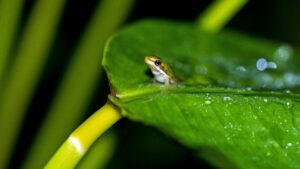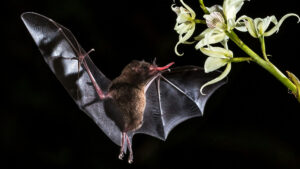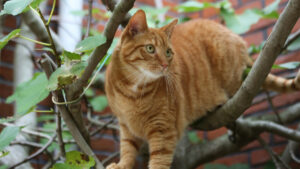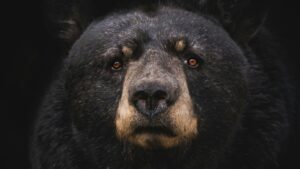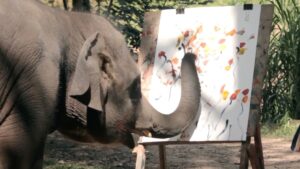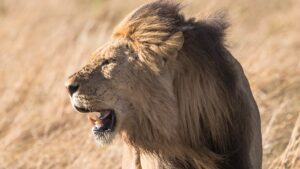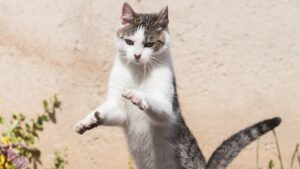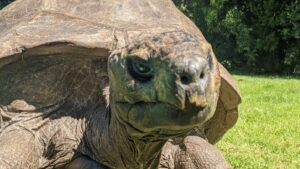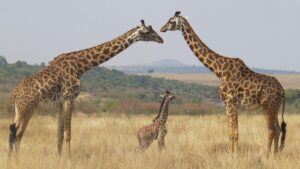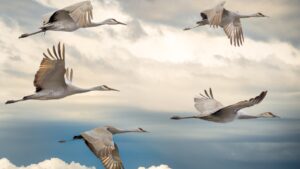Rain brings a refreshing change to the environment, washing away the dust and nurturing the earth. But for the animal kingdom, rain is much more than a mere weather phenomenon. It triggers a fascinating array of behaviors, from the practical to the peculiar, as creatures great and small adapt to the wet conditions. Let’s explore how different animals respond to rainy weather and the reasons behind these intriguing behaviors.
A Shower of Survival: Adaptations in the Rain
When the skies open up and rain begins to fall, it’s not just the landscape that changes — animal behavior transforms as well. For many species, rain presents both challenges and opportunities, leading to a fascinating display of adaptations and survival strategies.
Birds: Singing in the Rain

Birds have a unique relationship with rain. While some species, like the common sparrow, seek shelter during heavy downpours, others take the opportunity to hunt. Rain often brings insects to the surface, providing an easy meal. Birds like robins and thrushes are particularly active during and after rain, searching for worms that emerge from the soaked soil.
Some birds, such as ducks and other waterfowl, are perfectly at home in the rain. Their waterproof feathers keep them dry and insulated, allowing them to continue their daily activities without concern. For these birds, rain is just another day in their wet habitat.
Amphibians: Rain as a Call to Action
Amphibians, including frogs and toads, often become more active during rainy weather. The moisture is crucial for their skin, which they need to keep moist to breathe and regulate their body temperature. Rainy nights are also prime time for breeding calls. The increased humidity and water availability provide ideal conditions for laying eggs, which are typically deposited in water, per Animal Scene.
In tropical regions, rain can trigger mass migrations of certain amphibian species. These migrations are often synchronized with the rainy season, ensuring that the next generation has a water-rich environment in which to develop.
Mammals: Seeking Shelter and Food
Mammals show a wide range of behaviors in response to rain. Some, like deer and rabbits, are more likely to seek shelter during heavy rainfall, as wet fur can lead to hypothermia. However, not all mammals shy away from the wet weather. For example, wild boars are often seen foraging during rainstorms, as the softened ground makes it easier to find roots and tubers.
Predators such as wolves and big cats may also hunt during or after rain, taking advantage of the fact that their prey might be more active or less vigilant. Additionally, the rain can mask the sound of their approach, giving them an edge in stalking their prey.
Insects: Rainy Resilience
Insects are incredibly diverse in their responses to rain. Some, like ants, will close off their nests to prevent flooding, while others, like certain butterflies, will seek shelter under leaves or other protective cover. Interestingly, rain can also be a boon for some insect species. For example, mosquitoes often use puddles formed by rain to lay their eggs.
Some insects, such as fireflies, become more active after rain, as the increased humidity can enhance their bioluminescent displays. This is often seen as a way to attract mates, making the post-rain period a bustling time for these glowing insects.
The Science Behind the Rainy Behavior
The behavioral changes animals exhibit in response to rain are often driven by survival instincts. Rain alters the environment in several ways: it changes temperatures, affects food availability, and modifies the terrain. For instance, wet ground can make it easier for animals like birds and wild boars to find food, while also making it harder for predators to track scents.
For many species, rain is also a signal of seasonal changes. In regions with distinct wet and dry seasons, rain can trigger breeding behaviors, migrations, and other critical life cycle events. Amphibians, in particular, rely on rain to provide the moist conditions necessary for breeding and for the survival of their offspring.
The Role of Rain in Ecosystems
Rain is a vital component of many ecosystems, and its impact on animal behavior plays a significant role in maintaining ecological balance. For example, when rain brings insects to the surface, it not only provides food for birds but also helps control insect populations. Similarly, the breeding activities of amphibians during rainy periods can influence the populations of these species, which in turn affects the entire food web.
Rain can also impact animal behavior in more indirect ways. For example, rain can influence plant growth, which affects herbivores and, subsequently, the predators that rely on them. In this way, the effects of rain ripple through the ecosystem, demonstrating the interconnectedness of all life forms.
The Human Connection
As observers of the natural world, humans have long been fascinated by how animals behave in the rain. This curiosity has led to numerous studies and observations, enhancing our understanding of animal behavior and the ecosystems they inhabit. Understanding these behaviors is not just an academic pursuit; it has practical implications as well. For instance, farmers may observe the behavior of animals to predict weather changes, while conservationists can use this knowledge to protect vulnerable species during critical periods like breeding seasons.
An Animal Symphony in the Rain
The rain brings more than just a change in weather — it sets the stage for a remarkable symphony of life. As droplets fall, they cue a range of behaviors in the animal kingdom, from the lively chorus of frogs heralding new beginnings to birds seizing the opportunity to forage for freshly emerged insects. Even mammals display unique patterns of movement and activity during rainy periods.
Every droplet-influenced action demonstrates the remarkable adaptability and survival instinct of animals. This intricate dance of life in the rain highlights the deep connections between weather and wildlife, revealing the resilience and ingenuity of animals in response to their environment.
RELATED: Surfing Cat Loves Riding the Waves in Hawaii — Hang 18!
Header image: Northern dwarf tree frog / David Clode via Unsplash
I’m Mark Putzer, and my passion for animals and all things nature is a life-long love affair. Growing up in Wisconsin, I had many cherished memories of hiking, skiing, and enjoying the abundant wildlife in the Badger State.
My passion for animals led me to marine biology research for my studies at the University of Wisconsin. I researched the behavior and communication of humpback whales around Hawaii and Orca Whales around the San Juan Islands of Washington State. The experience of being close to these massive and magnificent creatures is amazing. Later, I taught outdoor education to children in California — passing along my knowledge of animals and nature to the curious minds of the next generation. I also love pets. This includes a Labrador Retriever dog named “Molly” when I was a kid — and now, an adventurous tabby cat named “Rosy.”
I’m here to share the wonders of the animal kingdom with you. Whether it’s a cherished pet at home or an animal out in the wild, there are many unique stories and interesting information to share on Weird Animal News! Enjoy!

